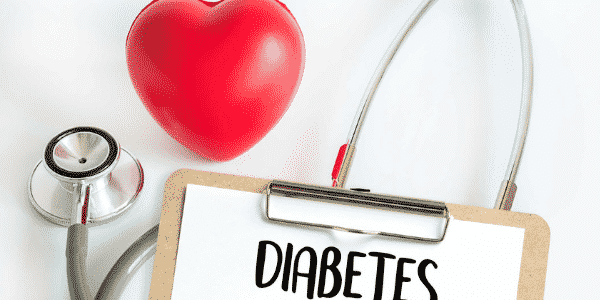Type 2 Diabetes: A Catalyst for Heart Disease
Diabetes is now considered an epidemic in the Philippines, with 1 of 14 Filipino adults affected by this disease. A significant portion of that statistic is adult Filipinos with type 2 diabetes. When you have type 2 diabetes, the pancreas does not create enough insulin, a hormone that regulates the transport of sugar into your cells, and your cells respond poorly to insulin. Thus, your body fails to produce enough insulin to control your sugar levels or metabolize your insulin supply effectively. As a result, the body utilizes and recognizes sugar as fuel, leading to a significant increase in sugar circulating in your bloodstream. High blood sugar levels can negatively affect your nervous, circulatory, immune systems and can be a catalyst for heart disease.
Most importantly, there is a link between diabetes and heart disease. A prevalent problem in ( #t2d ) type 2 diabetes patients is they tend to develop heart disease than people without diabetes. When the heart cannot pump enough blood around the body at the proper pressure and with the high blood glucose damaging the blood vessels, it can lead to heart disease. Hence, Type 2 Diabetes is one of the main catalysts and drivers for heart diseases.
With all the underlying conditions that come with type 2 diabetes, the good news is that, unlike type 1 diabetes that is genetic, type 2 diabetes is primarily affected by lifestyle choices. Significant changes like living a balanced lifestyle and practicing healthier habits can effectively prevent getting the disease.
Don’t know where to start? Here is a lifestyle guide for you to follow to keep your sugar levels and your heart rate at bay:
The Factors that Lead to Type 2 Diabetes
Type 2 diabetes is mainly caused by little to no insulin production of the pancreas. However, several factors can also lead to developing this disease. Knowing how one can get type 2 diabetes can give you an insight on what to avoid and start doing to lead a better lifestyle. It also increases understanding of how your body works and how to take care of it.
-
Genes
Although the chances are not as high that you would inherit type 2 diabetes from close family members as type 1 diabetes, there is still a possibility. Many people diagnosed with type 2 diabetes have at least one family member with the disease.
-
Extra weight
Although not every type 2 diabetes patient is overweight or obese, being overweight can lead to insulin resistance. If you carry additional weight around your midsection, there is an increased risk of getting type 2 diabetes.
-
Extra glucose in your liver
When your blood sugar drops, your liver produces and excretes glucose. When you eat, your blood sugar rises, and your liver slows down and stores glucose for later use. However, some people’s livers do not. They continue to produce sugar, leading to spikes and high blood sugar levels.
-
Polycystic ovary syndrome (PCOS)
PCOS, characterized by cysts in the ovaries, affects one in ten women of childbearing age. PCOS patients are usually insulin resistant, leading to type 2 diabetes if left untreated.
How You Can Prevent Type 2 Diabetes
-
Get checked and be aware
People usually dismiss the effects of what they eat, especially during the holiday season. Thus, we could not be fully aware of the risks of your food intake. If you are experiencing symptoms of having type 2 disease, such as frequent urination, excessive thirst, and unexpected weight loss, get checked for diabetes immediately.
The first step toward proper treatment and medicine is a correct diagnosis. Furthermore, without an accurate diagnosis, you will be unable to change your food and lifestyle to your specific situation. You will also not get the proper treatment and medication if not checked by a physician.
If you suspect something is wrong with your body, get checked immediately. It is crucial to be aware of the risks and causes of type 2 diabetes and change your lifestyle to prevent your health from worsening.
-
Practice proper diet
Consuming sugary meals and refined carbohydrates might put people at risk for diabetes on the fast track. Your body promptly breaks down these types of food into tiny sugar molecules, which circulate across your bloodstream.
The ensuing increase in blood sugar encourages your pancreas to create insulin, which may rapidly cause your body to develop insulin resistance. It is also best to watch your portion sizes if you are overweight, as overeating may rapidly increase insulin.
Furthermore, minimizing your consumption of processed foods is an obvious step you can take to enhance your health. Unhealthy consumption of junk food and sugary foods correlates to various health issues, including heart disease, obesity, and diabetes.
-
Work out regularly
Incorporating physical activity into your daily life is an essential component of diabetes control and prevention. Exercise boosts insulin activity, which causes your blood glucose to be utilized as energy, lowering your blood sugar levels.
Although experts highly advise aerobic workouts and weight training to prevent type 2 diabetes, it is best to make an exercise routine tailored for you. You will only maintain regular exercise if you enjoy what you are doing.
Practice Healthier Lifestyle Choices
There is no known cure for type 2 diabetes. However, it is a lifestyle disease that is preventable and manageable when you make better choices for your health. This is true even when you have close family members with the same disease. Find ways to change your lifestyle for the better by following our lifestyle guide above. Remember, a healthy body constitutes a happy heart!
Image Credit






